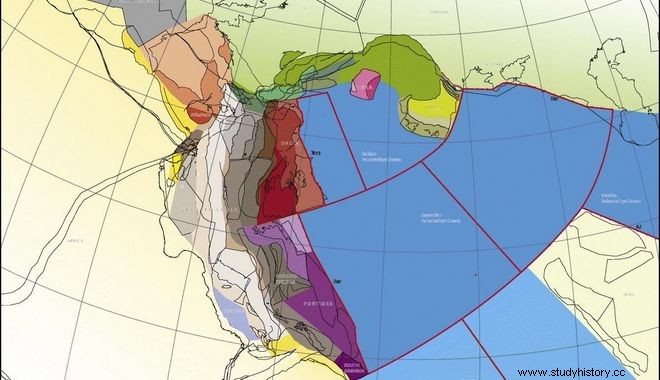The mythical lost continent of Atlantis has the famous name, but Adria is a real lost continent that is largely buried under Southern Europe and the Mediterranean, thus under Greece.
For the first time, geologists believe they are now able to reconstruct the almost 250-million-year-old history of the lost continent by studying the few remnants that are still above the surface.
Today, from the so-called Greater Adria, only some limestone and other rocks are visible in the mountain ranges of Southern Europe. Scientists believe that these rocks were originally marine sediments, which at some point were uplifted through the collision of tectonic plates.
The researchers, led by Dutch geologist Dau van Hinsbergen of the Department of Geosciences at the University of Utrecht, who made the relevant publication in the journal Gondwana Research, according to "Science", spent over ten years mainly in the Mediterranean, collecting samples and studying paleomagnetic and other evidence for rocks considered to have come from Hadria.
Greater Adria seems to have had a violent and complex history. At some point, about 240 million years ago, it broke away from the southern supercontinent of Gondwana (which covered the area of present-day Africa, South America, Australia, Antarctica, India and the Arabian Peninsula) and began to move further north. It was more of an archipelago of islands, "an area suitable for diving," according to Hinsbergan.
140 million years ago it was about the size of Greenland and was largely submerged under a shallow tropical sea, where sediments gradually accumulated and slowly turned into rock. The Greater Adria belonged to the African tectonic plate, but was not part of Africa, as an ocean separated the two continents.

Then, as Adria collided with the land mass that makes up Europe today at a rate of up to four centimeters per year, which happened 100 to 120 million years ago, it broke apart and sank. Only a fraction of the 100 km thick rocks of the Greater Adria remained on the Earth's surface, and today geologists are looking for them mainly in Southern Europe. These rocks are believed to be scattered in over 30 countries (including Greece), from Spain and the Alps to Iran.
Until recently, geologists lacked the sophisticated software that would allow them to synthesize the available evidence and computerize the history of the Adria, especially since, according to Hinsbergen, "the Mediterranean region is simply a geological mess." The new study takes an important step in this direction.
It is estimated that today parts of Adria lie at a depth of up to 1,500 kilometers below the surface of the Mediterranean.
